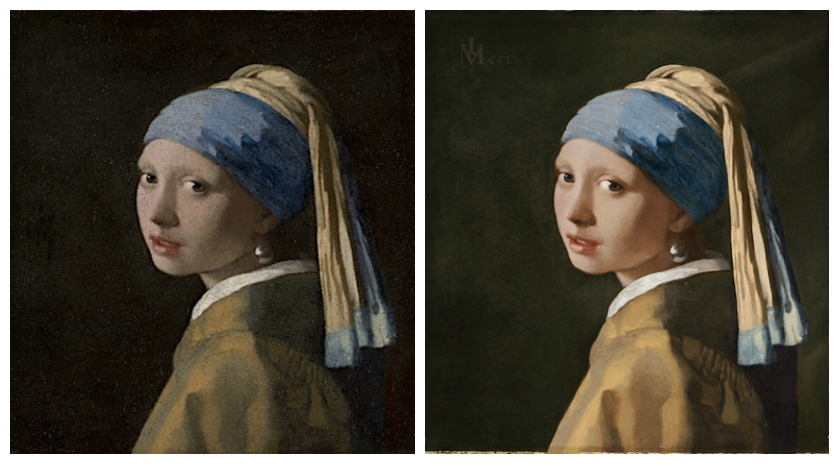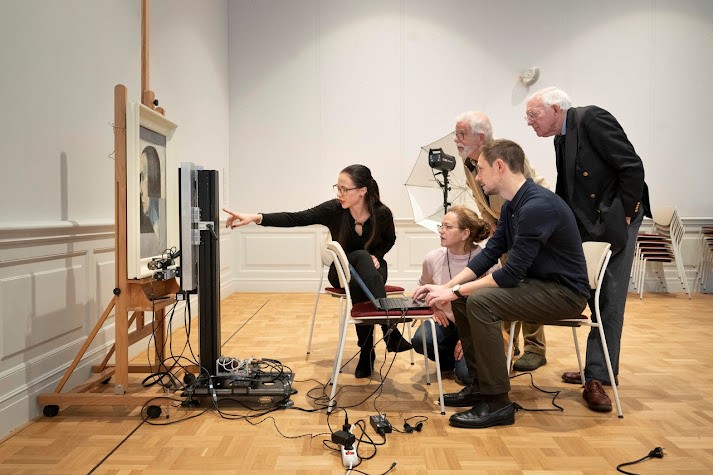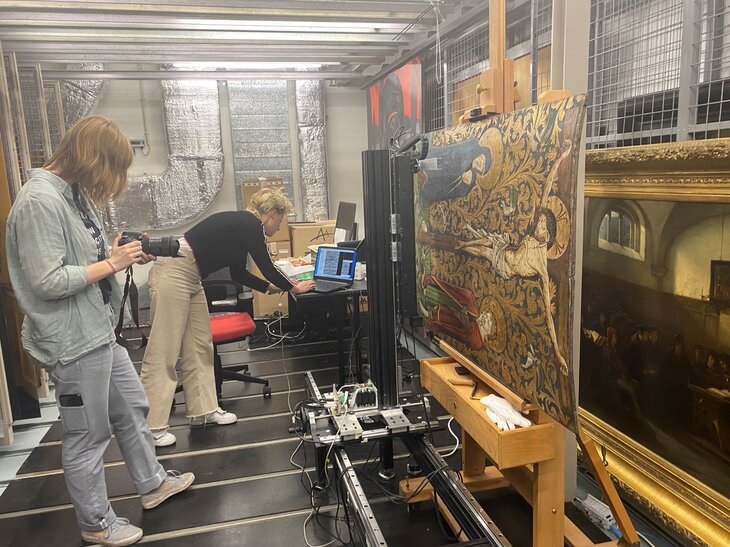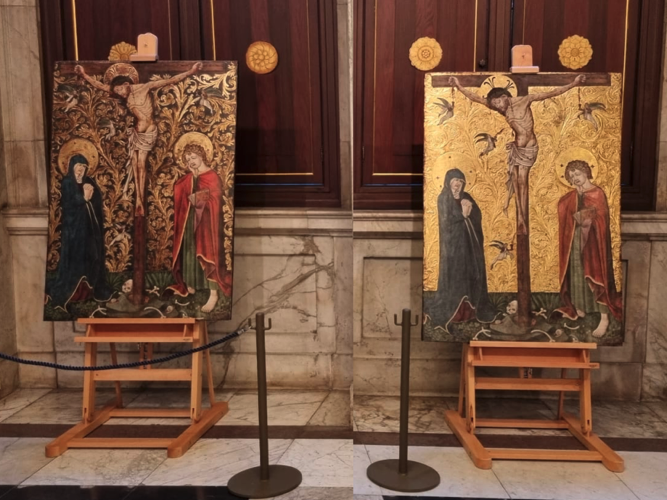Original paintings rediscovered through the power of 3D printing
What does a work of art signify when it is no longer in its original form, but instead exists as a perfect 3D replica? Liselore Tissen, a PhD student at TU Delft and Leiden University, investigated how 3D replicas change the way we experience art. On 9 October, she defended her thesis, which examines the relationship between the original artwork, its reproduction and the viewer.
Using 3D printing, Tissen has reproduced famous works of art, such as Girl with a Pearl Earring and a half-burned Rembrandt, in a way that approaches the original on a microscopic level and is almost indistinguishable from the real thing. ‘There is a fear that 3D reproductions threaten the role of museums and original works of art,’ says Tissen. ‘But my research shows that art is much more than just the material. Paradoxically, a reproduction can actually highlight or even enhance the value of the original.’
Among other things, Tissen has studied the function of artworks in their original context. She discovered, for example, that a 15th-century crucifixion scene from the collection of the Museum Catharijneconvent, whose background was once gold but is now painted over in blue, would be more compelling in its original gold version. ‘Gold leaf played an important role in the Middle Ages, as it was a reference to God. The interaction between the gold with the flickering candlelight highlights certain details, such as the blood of Christ, which is painted in a much more matte finish, making them stand out more prominently,’ Tissen explains. ‘Thanks to 3D printing technology, we can now not only show what the artwork once looked like without having to drastically restore the original, but we can also show it in its original context, in this case a church, without having to lose the original material.’
Reliving the past
The possibilities of 3D technology are endless, says Tissen. ‘For example, we reconstructed Girl with a Pearl Earring as it looked when the painting was just completed,’ she says. ‘We were able to accurately recreate details such as eyelashes, rosy cheeks and a green curtain in the background, thanks to the large amount of data we obtained, thanks in part to master’s students at TU Delft.’
The reconstructed version of Girl with a Pearl Earring was shown to museum visitors to initiate a discussion: what is actually ‘original’, if a 3D replica may be closer to the artist’s original intention than the current painting? And how does it affect your perception when you see a famous artwork in a different form? Tissen explored these questions by recording the reactions of visitors. She discovered that 3D prints, when properly used to highlight aspects of the original that are no longer visible due to the fragile material, are greatly appreciated by people precisely because they can physically touch them.
Art accessible to all
Tissen also explored how 3D reproductions can replace or complement museum labels. For example, in the case of Theo van Doesburg’s work at Museum De Lakenhal, she largely replaced textual explanations with visual reproductions that zoom in on important details and cracks in the paint. ‘I'm not a fan of long texts accompanying artworks,’ she says. ‘With reproductions, you can make the information much more accessible by focusing directly on what’s important.’
Ultimately, Tissen hopes her work will help to democratise art. ‘Art is still too often seen as something elitist,’ she explains. ‘My goal is to understand what “ordinary” visitors, people with no prior knowledge, think and feel about art. I want to make art accessible to everyone, including to those who wouldn’t normally visit a museum.’
Tissen’s research demonstrates that new technologies are anything but a threat to the authenticity of art. In fact, they can add a new dimension. 3D reproductions have the power to give art new meaning, to make us reflect on what is real or original, and to make art accessible to a wider audience.
In her PhD research, Tissen combined technological research with social science, something she wholeheartedly recommends to other researchers: ‘I hope this inspires people to seek collaborations outside their field and, above all, to integrate the human aspect more. Not only would this make research more enjoyable, but it would make it better and more efficient too. It would help us gain a better understanding of what people want, which would enable us to act on that directly.’





